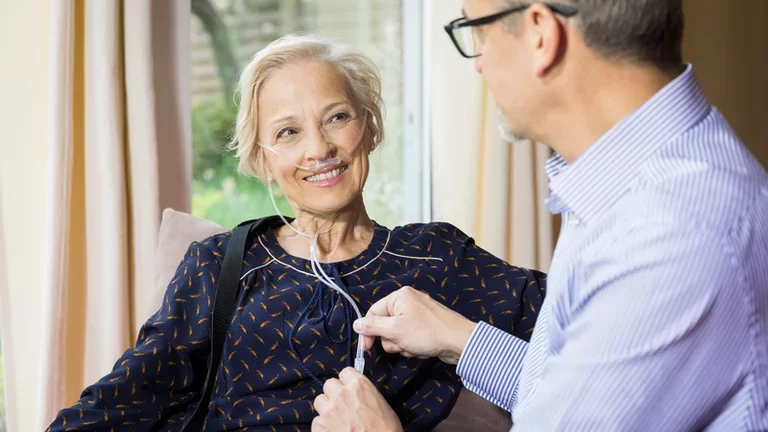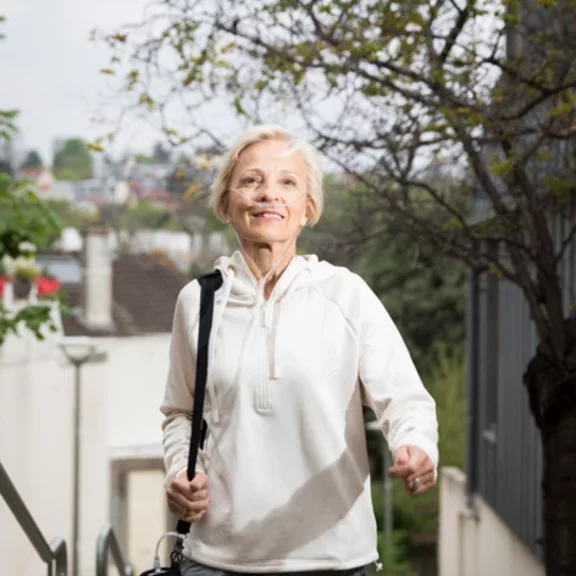Oxygen therapy
Who needs Oxygen Therapy?
Everyone needs oxygen.
Without it, we could not survive, as our cells use oxygen and nutrition from the foods we eat to make energy needed to function.People with healthy lungs get all the oxygen they need through normal breathing. Those with lung conditions don’t get the oxygen they need through normal breathing, and it is these people who may need extra oxygen.
Oxygen is not addictive but too little may not be beneficial and too much can be harmful.
How is oxygen therapy prescribed?
- Your doctor will refer you to a specialist clinic if they think your symptoms can be helped by home oxygen therapy.
- You may also be assessed during a hospital admission or when attending a specialist physiotherapist or nurse led out patient clinic.
- Blood tests or oxygen sensors are used to check the amount of oxygen in your blood.
- You may also be asked to breathe into a device that checks how well your lungs are working, this is called Spirometry.
- If it's deemed you require home oxygen your healthcare professional will send an order to ourselves that will specify the flow rate for your oxygen and will also state how many hours per day you need to use it.
- Based on that order one of our technicians will make contact with you to arrange a date and time to complete the install.
Oxygen must always be prescribed by a healthcare professional.
Using oxygen therapy
-
Placing short tubes (nasal cannula) in your nostrils
-
Using a mask over your nose and mouth
This is then connected to your oxygen therapy equipment via extension tubing. There are a number of ways you can receive supplementary oxygen and this will depend on your condition and lifestyle. Your healthcare professional will be the best person to advise you:
- Oxygen concentrator: will deliver a steady supply of oxygen in the home and are a suitable solution for users with high flow rates and for those who use their oxygen for several hours a day. Concentrators use electricity and a static cylinder is supplied as an emergency back-up
- High capacity cylinders (B10): are mainly used as a back up supply to a concentrator in the event of a power cut or machine failure.They are also suitable for patients who require only small amounts of oxygen at home.
- Portable oxygen cylinders (B1 and B2): portable oxygen cylinders allow greater mobility outside the home and are therefore suitable for patients who are active and independent and who still want to be out and about. They are usually used with a conserver which will extend the duration of the cylinder
- Portable/Transportable oxygen concentrators (POCs/TOCs): these devices take the surrounding air and produce oxygen. They are designed to be lightweight and have an internal battery and trolley or carry bag so they can be easily transported. They are designed primarily for daytime portable use and are suitable if you are away from home a lot and have high oxygen requirements during the day.
You can travel with oxygen
Being dependent on oxygen does not mean life stops. Today’s equipment means you can get out and about more easily.
Oxygen can also be arranged when you want to go on holiday. It just takes a little more forward planning to make sure everything is well organised before you go.
Get out and about




